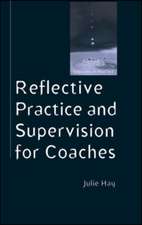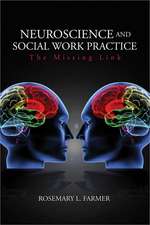Nurturing Attachments
Autor Kim S. Goldingen Limba Engleză Paperback – 19 dec 2007
Preț: 153.62 lei
Preț vechi: 186.28 lei
-18% Nou
Puncte Express: 230
Preț estimativ în valută:
29.40€ • 30.58$ • 24.27£
29.40€ • 30.58$ • 24.27£
Carte disponibilă
Livrare economică 24 martie-07 aprilie
Livrare express 07-13 martie pentru 57.59 lei
Preluare comenzi: 021 569.72.76
Specificații
ISBN-13: 9781843106142
ISBN-10: 1843106140
Pagini: 239
Ilustrații: 10 illustrations
Dimensiuni: 150 x 232 x 18 mm
Greutate: 0.36 kg
Editura: Jessica Kingsley Publishers Ltd
Locul publicării:United Kingdom
ISBN-10: 1843106140
Pagini: 239
Ilustrații: 10 illustrations
Dimensiuni: 150 x 232 x 18 mm
Greutate: 0.36 kg
Editura: Jessica Kingsley Publishers Ltd
Locul publicării:United Kingdom
Notă biografică
Kim S. Golding CBE, BSc, MSc, D. Clin. Psy. AFBPsS is a clinical psychologist who works in Worcestershire, England where she was influential in the founding of the Integrated Service for Looked After Children - a multi-agency, holistic service providing support for foster, adoptive and residential parents, schools and the range of professionals supporting children growing up in care or in adoptive families. Kim was trained and mentored by Dan Hughes in the use of Dyadic Developmental Psychotherapy (DDP). She is on the board of the Dyadic Developmental Psychotherapy Institute supporting the use of DDP in Europe, USA and Canada. She accredits and trains professionals in the approach in the UK and has been invited to speak about this work internationally.
Cuprins
Section 1: Attachment Theory. 1. Overview of Attachment Theory. 2. Attachment Theory: Caregiving and Its Impact on Attachment and Exploration. 3. Attachment Theory: Patterns of Attachment. 4. Difficulties in Development: The Impact of Loss and Trauma. 5. Parenting Children with Attachment Difficulties. Experiencing Relationships as Secure. 6. Parenting and Patterns of Attachment. Section 2: A Model for Parenting the Child with Difficulties in Attachment Relationships: Providing a Secure Base. 7. Introduction to the Model and Creating a Secure Base. 8. Empathy and Support from the Secure Base. 9. Attunement and Empathy. 10. Protecting the Family Atmosphere and the Development of Emotional Regulation. 11. Creating a Feeling of Belonging for the Child. 12. Looking after Yourself. Section 3: A Model for Parenting the Child with Difficulties in Attachment Relationships: Building Relationships and Managing Behaviour. 13. Helping the child to enjoy being part of the family. 14. Learning to Parent with PACE and Building Relationships with Stories. 15. Providing Structure and Supervision. 16. Managing Confrontation and Coercive Interactions. 17. Thinking, Feeling and Behavioural Choices. 18. Managing Special Difficulties: Lying, Stealing and Self Harm. 19. Conclusion. References. Glossary. Reading list. Subject index. Author index.













